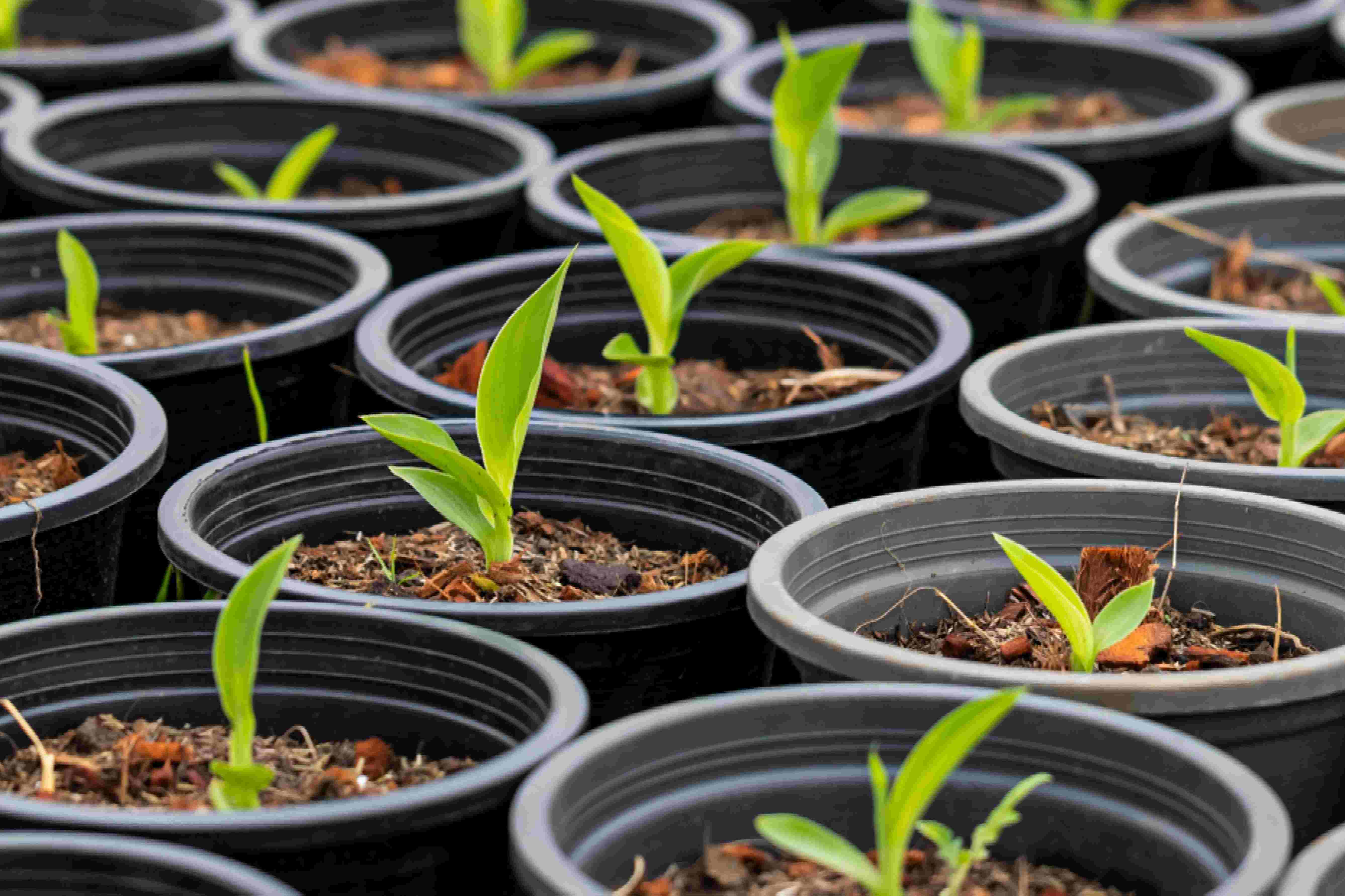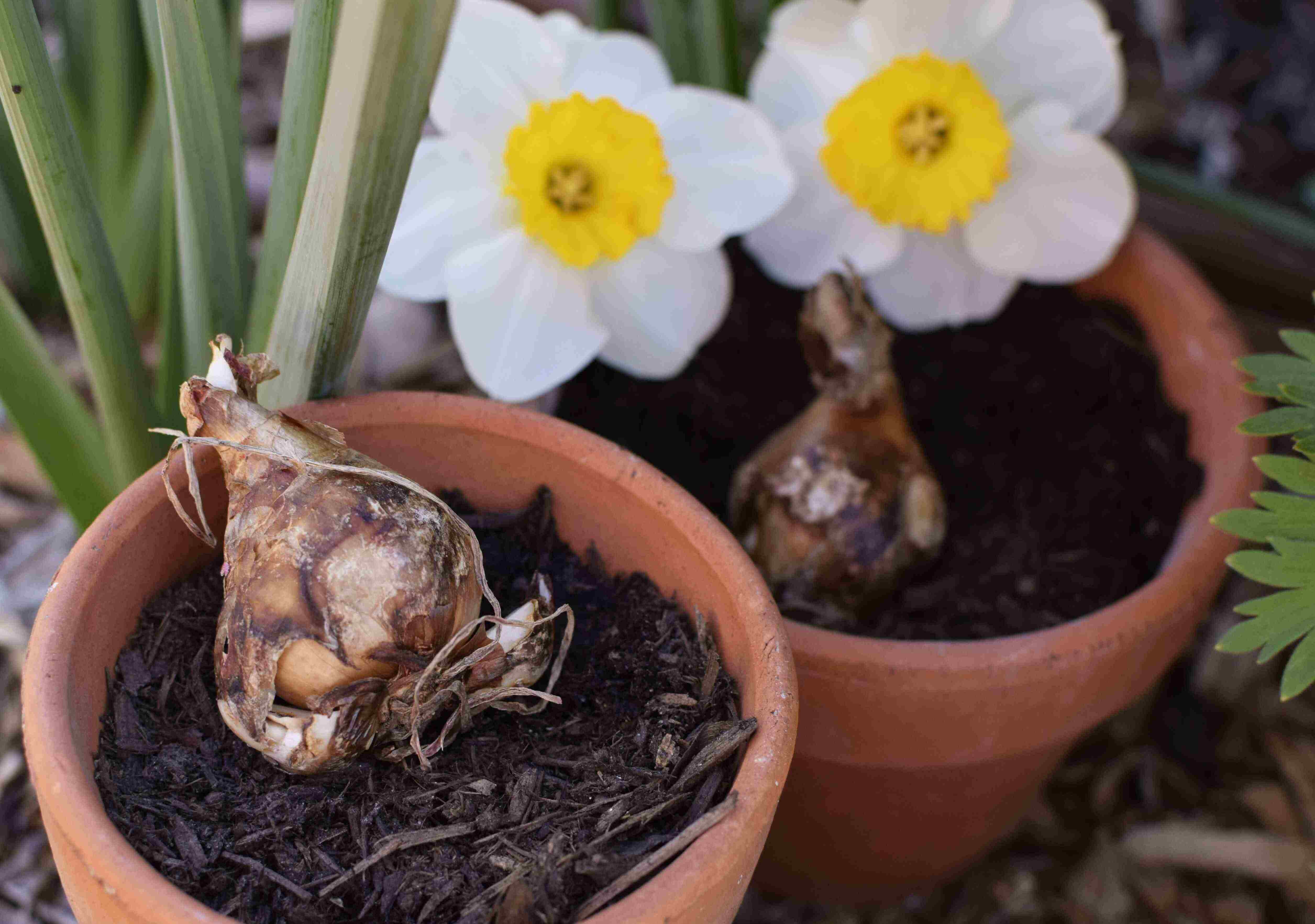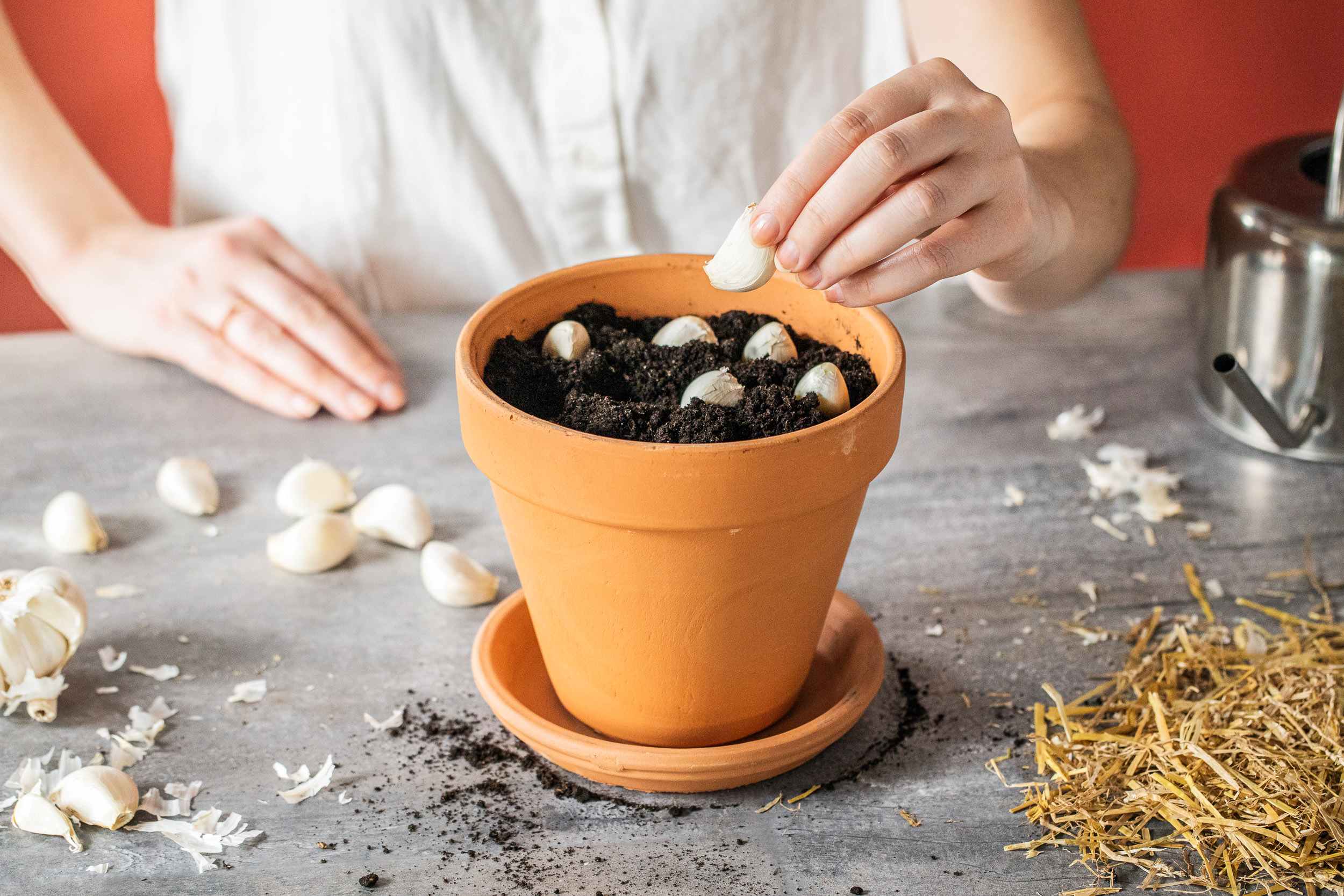Home>Types of Gardening>Ornamental Gardening>How To Store Amaryllis Bulbs


Ornamental Gardening
How To Store Amaryllis Bulbs
Published: January 24, 2024
Learn the best way to store your amaryllis bulbs for successful reblooming next season. Get expert tips on ornamental gardening from experienced gardeners.
(Many of the links in this article redirect to a specific reviewed product. Your purchase of these products through affiliate links helps to generate commission for Chicagolandgardening.com, at no extra cost. Learn more)
Table of Contents
Introduction
Ornamental gardening is a delightful and rewarding activity that allows individuals to create stunning outdoor spaces. Among the many enchanting plants that can transform a garden into a vibrant oasis, the amaryllis stands out for its striking beauty and captivating blooms. This popular flowering bulb, native to South America, is cherished for its large, trumpet-shaped flowers that come in an array of vibrant colors.
To ensure the long-lasting beauty of your amaryllis bulbs and enjoy their magnificent blooms year after year, proper storage during dormant periods is crucial. Properly storing amaryllis bulbs helps protect them from extreme temperatures and provides the necessary conditions for their dormancy.
In this article, we will guide you through the process of storing amaryllis bulbs, step by step. From choosing the right time for digging up the bulbs to determining an appropriate storage location, we will cover everything you need to know to keep your amaryllis bulbs healthy and ready for the next growing season.
Step 1: Choosing the Right Time for Digging
Timing is crucial when it comes to digging up your amaryllis bulbs for storage. You should wait until the foliage begins to yellow and die back naturally, indicating that the bulb is entering its dormant phase. This usually occurs in late summer or early fall, depending on your location and the particular variety of amaryllis you have.
Before digging up the bulbs, it’s important to stop watering them and allow the soil to dry out. This helps prevent any excess moisture from causing rot during storage. Once the foliage has withered and turned yellow, gently remove the bulbs from the soil using a garden fork or shovel, being careful not to damage them.
Inspect the bulbs for any signs of damage or disease. Discard any bulbs that are soft, moldy, or show signs of rot. Only healthy and firm bulbs should be selected for storage.
Remember that different varieties of amaryllis may have slightly different dormancy periods. Some may go dormant for a few months, while others may require a longer period of rest. It’s essential to research the specific variety you have to determine the ideal timing for digging up and storing the bulbs.
Step 2: Preparing the Bulbs for Storage
Once you have carefully dug up your amaryllis bulbs, it’s important to prepare them for storage to ensure their health and viability. Follow these steps to properly prepare your bulbs before putting them into storage.
1. Trim the foliage: Using clean and sharp gardening shears, trim the foliage down to about 2 inches above the bulb. This helps conserve energy and reduces the risk of fungal diseases during storage.
2. Remove loose scales: Gently remove any loose or dead scales from the bulb. This helps prevent the spread of disease and allows for better air circulation around the bulb.
3. Dust with fungicide: Dusting the bulbs lightly with a fungicide powder helps prevent fungal diseases while in storage. Be sure to use a fungicide labeled for use on bulbs and follow the instructions carefully.
4. Label the bulbs: To avoid confusion, it is essential to label each bulb with the variety name or any other relevant information. This will make it easier to identify the bulbs when it’s time to replant them.
5. Allow for drying: Before storing the bulbs, let them dry for a few days in a cool, dry, and well-ventilated area. This will help the wounds heal and reduce the risk of rot during storage.
By properly preparing your amaryllis bulbs for storage, you can promote their long-term health and increase the chances of successful regrowth and blooming in the following season.
Step 3: Cleaning and Drying the Bulbs
Cleaning and drying your amaryllis bulbs is an important step in their storage process. By removing any dirt or debris and allowing them to dry properly, you are promoting their longevity and minimizing the risk of disease. Follow these steps to clean and dry your bulbs effectively.
1. Remove excess soil: Gently brush off any loose soil clinging to the bulbs. Avoid washing them with water, as this can introduce unnecessary moisture and increase the risk of rot.
2. Inspect for damage or pests: Take the time to carefully examine each bulb for any signs of damage, such as cuts, bruises, or insect infestations. Remove any damaged or infested bulbs, as they can compromise the health of the others during storage.
3. Use a disinfectant solution: To further protect against pests and diseases, you can soak your bulbs in a diluted disinfectant solution. Mix a mild solution of bleach or hydrogen peroxide with water and soak the bulbs for about 15 minutes. Afterward, rinse them thoroughly with clean water and allow them to air dry.
4. Dry the bulbs: Place the clean bulbs in a single layer on a dry surface or a tray lined with newspaper. Allow them to air dry for about two weeks in a cool, well-ventilated area. Avoid exposing the bulbs to direct sunlight or excessive heat, as this can cause them to dry out too quickly.
5. Check for mold or rot: During the drying period, regularly check the bulbs for any signs of mold or rot. If you notice any issues, remove the affected bulbs immediately to prevent the problem from spreading to the others.
By taking the time to clean and dry your amaryllis bulbs properly, you are ensuring their optimal health and increasing their chances of successful regrowth and blooming in the future.
Step 4: Choosing an Appropriate Storage Location
Choosing the right storage location for your amaryllis bulbs is crucial to their survival during the dormant period. The ideal storage conditions will provide a cool and dry environment that mimics the bulbs’ natural habitat. Follow these guidelines to select the best storage location for your bulbs.
1. Temperature: Amaryllis bulbs prefer cool temperatures during their dormant period. Aim for a storage location that maintains a temperature between 40 and 50 degrees Fahrenheit (4 to 10 degrees Celsius). Avoid storing the bulbs in areas that are prone to extreme heat or cold fluctuations, such as garages or attics.
2. Light exposure: During the storage period, it’s best to keep the bulbs in a dark or dimly lit area. Exposure to light can cause premature sprouting and weaken the bulbs.
3. Humidity: Low humidity levels are desirable for amaryllis bulb storage. High humidity can promote rot or fungal growth. Choose a storage area with good air circulation and low moisture levels.
4. Ventilation: Proper ventilation is necessary to prevent the buildup of excess moisture around the bulbs. Avoid storing the bulbs in airtight containers or bags that can trap humidity. Instead, store them in breathable containers, such as mesh bags or paper bags, to allow for airflow.
5. Pests and rodents: Ensure that the storage area is free from pests and rodents that can damage or feed on the bulbs. Protect the bulbs by placing them in a secure location, away from potential pests.
By selecting an appropriate storage location with the right temperature, lighting, humidity, and ventilation, you are creating an ideal environment for the amaryllis bulbs to rest and prepare for their next blooming season.
Step 5: Storing the Amaryllis Bulbs
After properly preparing your amaryllis bulbs and choosing an appropriate storage location, it’s time to store them until the next growing season. Follow these steps to store your bulbs correctly and ensure their health and viability.
1. Choose a storage container: Select a breathable container, such as a mesh bag or a paper bag, to store your amaryllis bulbs. Avoid using airtight containers or plastic bags, as these can trap moisture and promote rot.
2. Place the bulbs in the container: Carefully arrange the bulbs in the container, ensuring that they have enough space and are not overcrowded. Avoid stacking the bulbs on top of each other, as this can cause pressure and damage.
3. Add a desiccant: To help absorb excess moisture and prevent rot, you can include a small amount of desiccant, such as silica gel or vermiculite, in the storage container. Be sure not to let the desiccant come into direct contact with the bulbs.
4. Label the container: Label the storage container with the variety name or any relevant information. This will help you easily identify the contents when it’s time to replant.
5. Store in the chosen location: Place the container with the bulbs in the designated storage location. Remember to keep the temperature cool, the light dim or dark, and the humidity levels low. Regularly monitor the storage area to ensure the conditions remain suitable.
6. Check periodically: During the storage period, it’s important to periodically check the bulbs for any signs of mold, rot, or pest infestation. If any issues are noted, remove the affected bulbs immediately to prevent further damage.
By following these steps, you can ensure that your amaryllis bulbs are stored in the optimal conditions for their dormancy period. This will increase the likelihood of healthy growth and beautiful blooms for the next growing season.
Conclusion
Properly storing your amaryllis bulbs during their dormant period is key to maintaining their health and ensuring beautiful blooms in the future. By following the steps outlined in this article, you can give your bulbs the optimal conditions they need for a successful dormancy period.
Remember to choose the right time for digging up the bulbs, preparing them for storage by trimming foliage and removing loose scales, and cleaning and drying them thoroughly. Selecting an appropriate storage location with the right temperature, lighting, humidity, and ventilation is crucial, as is choosing the right storage container and periodically checking on the bulbs during the storage period.
By implementing these practices, you can protect your amaryllis bulbs from rot, ensure they remain healthy, and increase the chances of successful regrowth and blooming in the following season. With proper care and attention, you can enjoy the stunning beauty of your amaryllis flowers year after year.
So, take the time to store your amaryllis bulbs correctly and anticipate the vibrant display of colorful blooms that these beloved flowers are known for.





